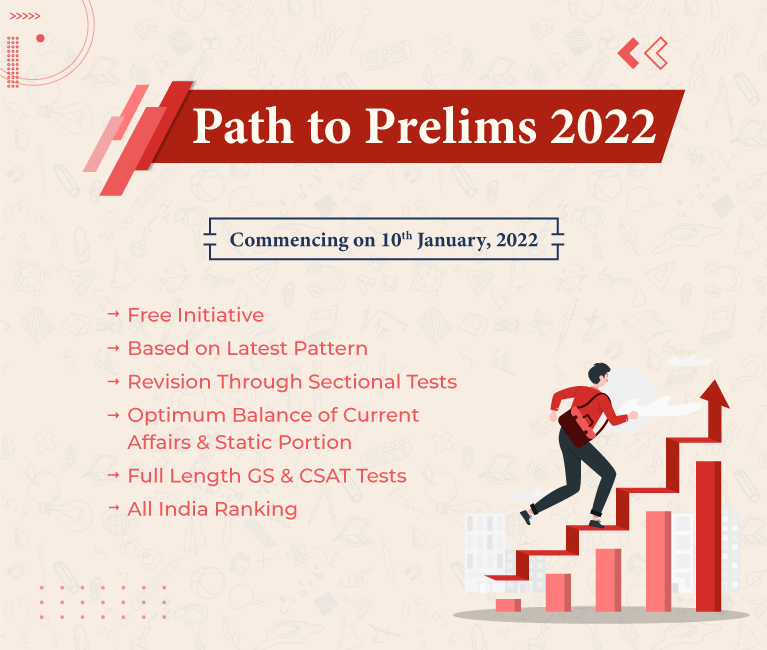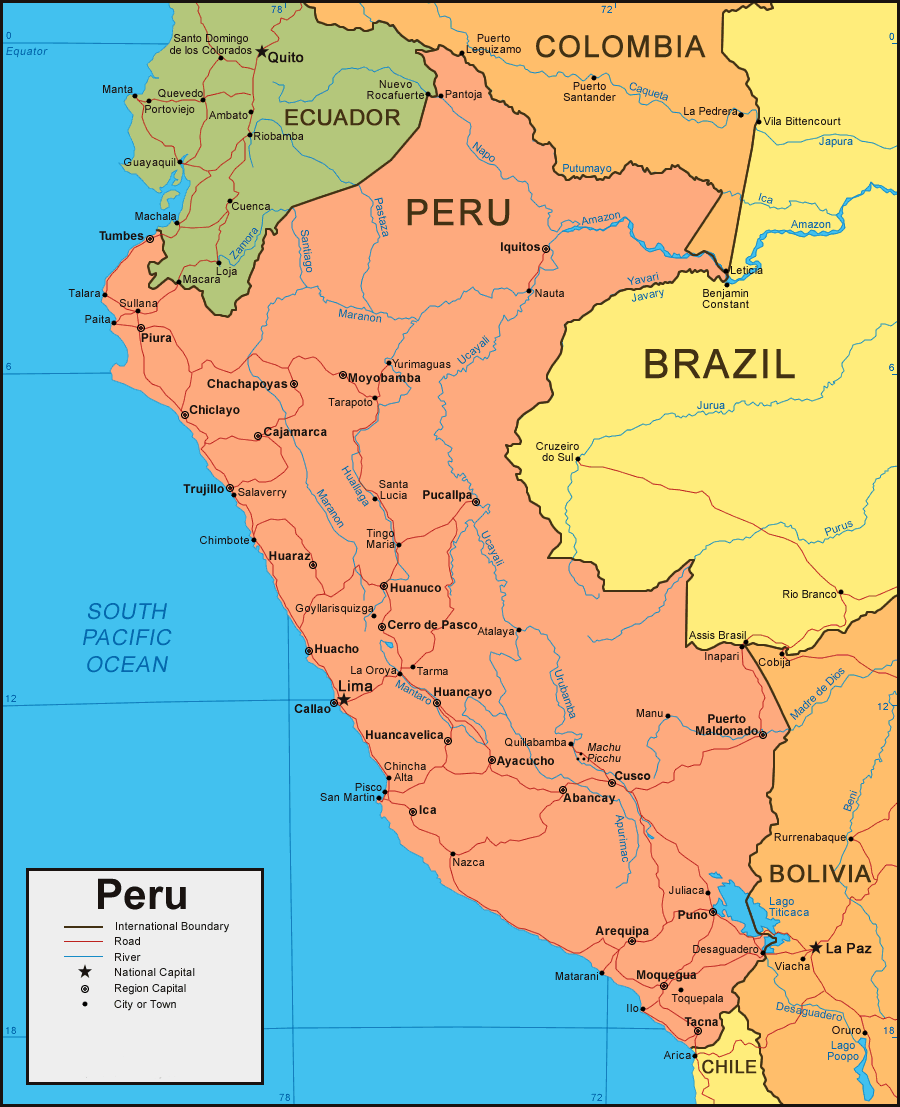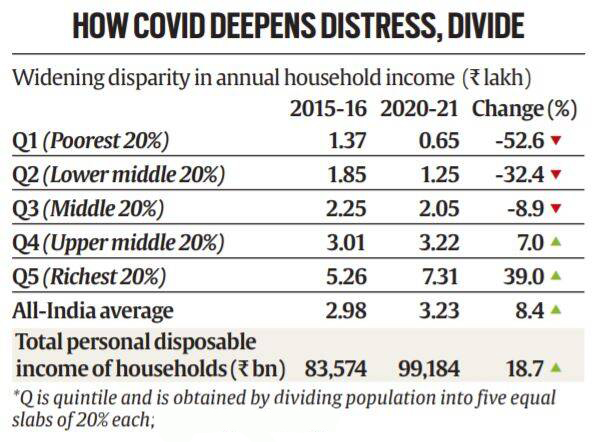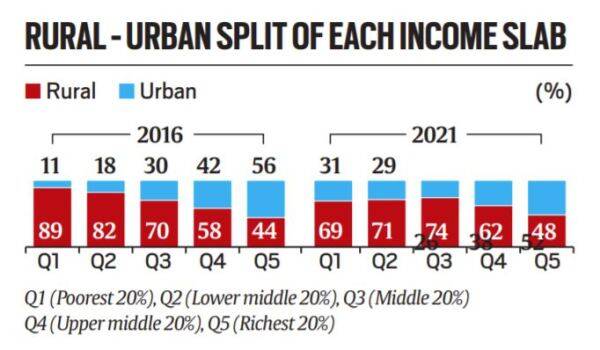Social Justice
Petition on Conjugal Rights
For Prelims: Conjugal Rights, Restitution, Marital Rape, Supreme Court, Acts and Laws Related to Marriage.
For Mains: Conjugal Rights, Restitution, Marital Rape, Acts and Laws Related to Marriage, Issues Related to Women, Gender.
Why in News
A petition challenging the provision allowing restitution (recovery) of conjugal rights under Hindu personal laws (Hindu Marriage act 1955).has been pending in the Supreme Court (SC) for months without a hearing.
- The petition, titled Ojaswa Pathak vs Union of India, was filed in the SC in February 2019. The case was last heard in July 2021.
Key Points
- Conjugal Rights:
- Conjugal rights are rights created by marriage, i.e. right of the husband or the wife to the society of the other spouse.
- The law recognises these rights— both in personal laws dealing with marriage, divorce etc, and in criminal law requiring payment of maintenance and alimony to a spouse.
- Section 9 of the Hindu Marriage Act 1955 and Section 22 of the Special Marriage Act 1954 empower a husband or a wife to move the local district court, complaining that the other partner has “withdrawn” from the marriage without a “reasonable cause”.
- The concept of restitution of conjugal rights is codified in Hindu personal law now, but has colonial origins.
- Originating from Jewish law, the provision for restitution of conjugal rights reached India and other common law countries through British Rule.
- The British law treated wives as their husband's personal possession hence they were not allowed to leave their husbands.
- Similar provisions exist in Muslim personal law as well as the Divorce Act, 1869, which governs Christian family law.
- Incidentally, in 1970, the U.K repealed the law on restitution of conjugal rights.
- Challenged Provision:
- Section 9 of the Hindu Marriage Act, 1955, which deals with restitution of conjugal rights, reads:
- When either the husband or the wife has, without reasonable excuse, withdrawn from the society of the other, the aggrieved party may apply, by petition to the district court.
- For restitution of conjugal rights and the court, on being satisfied of the truth of the statements made in such a petition and that there is no legal ground why the application should not be granted, may decree restitution of conjugal rights accordingly.
- Section 9 of the Hindu Marriage Act, 1955, which deals with restitution of conjugal rights, reads:
- Reason for Challenging the Law:
- Violation of Rights:
- The law is being challenged now on the main grounds that it violates the fundamental right to privacy.
- In 2017, a nine-judge Bench of the SC recognised the right to privacy as a fundamental right.
- The right to privacy is protected as an intrinsic part of the right to life and personal liberty under Article 21 and as a part of the freedoms guaranteed by Part III of the Constitution.
- The 2017 judgement has set the stage for potential challenges to several laws such as criminalisation of homosexuality, marital rape, restitution of conjugal rights, the two-finger test in rape investigations.
- The plea argues that a court-mandated restitution of conjugal rights amounted to a “coercive act” on the part of the state, which violates one’s sexual and decisional autonomy, and right to privacy and dignity.
- Biassed Against Women:
- Although the law is gender-neutral since it allows both wife and husband to seek restitution of conjugal rights, the provision disproportionately affects women.
- Women are often called back to marital homes under the provision, and given that marital rape is not a crime, leaves them susceptible to such coerced cohabitation.
- It is also argued whether the state can have such a compelling interest in protecting the institution of marriage that it allows a legislation to enforce cohabitation of spouses.
- Not in Consonance with SC Judgements:
- In the recent judgement of Joseph Shine v Union of India 2019, the SC has put great emphasis on the right to privacy and bodily autonomy of married women, stating that marriage does not take away their sexual freedom nor choice.
- If everybody is entitled to their bodily autonomy, choice, and right to privacy, how can a court mandate two adults to cohabit if one of them does not wish to do so.
- Misuse of the Provision:
- Another pertinent matter to take into consideration is the misuse of this provision as a shield against divorce proceedings and alimony payments.
- Often an aggrieved spouse files for divorce from their place of residence and their spouse retaliates by filing for a decree of restitution in their place of residence.
- Violation of Rights:
- Previous Judgements:
- In the 1960s, the Punjab and Haryana High Court in the Tirath Kaur case, upheld restitution of conjugal rights, noting that “a wife’s first duty to her husband is to submit herself obediently to his authority and to remain under his roof and protection”.
- The courts, in a series of judgments in the 1980s, have supported the law, holding that the denial of marital and sexual life to the husband by the wife by refusing to permanently return to him is an act of both mental and physical cruelty.
- In 1984, the SC had upheld Section 9 of the Hindu Marriage Act in the case of Saroj Rani v Sudarshan Kumar Chadha, holding that the provision serves a social purpose as an aid to the prevention of break-up of marriage.
- In 1983, a single-judge bench of the Andhra Pradesh High Court had for the first time struck down the provision in the case of T Sareetha v T Venkatasubbaiah and declared it null and void.
- It cited the right to privacy among other reasons. The court also held that in “a matter so intimately concerned the wife or the husband the parties are better left alone without state interference”.
- The court had, most importantly, also recognised that compelling “sexual cohabitation” would be of “grave consequences for women”.
- However, in the same year, a single-judge Bench of the Delhi High Court took a diametrically opposite view of the law. In the case of Harvinder Kaur v Harmander Singh Chaudhry, the Delhi High Court upheld the provision.
- The Madhya Pradesh High Court in the Vibha Shrivastava case, noted:
- This orthodox concept of wife ( Dharmpatni, Ardhangini, Bharya or Anugamini) and expectations from her to subject herself to husband's wishes has undergone a revolutionary change with education and high literacy in women and with recognition of equal rights to women in the constitution and abolition of sex distinction in all walks of life.
- She is a partner in marriage with equal status and equal rights with the husband, and the marriage cannot be a tyranny.
Way Forward
- The debate over criminalising marital rape compels a relook at how the provisions of restitution of conjugal rights, though gender-neutral, place an additional burden on women and poses a direct threat to their bodily autonomy, privacy and individual dignity.
- While we talk about gender equality and the gender-neutral quality of the law, women are still at a disadvantage in Indian society and this provision capitalises on it.
- Dowry deaths are a plague on society and women being emotionally and mentally manipulated and tortured for dowry are aplenty.
- It's time for the Indian judiciary and society to shift to more progressive views starting with the progressive theory of marriage. Marriage is not built upon the ceremonies but upon the autonomy and freedom of two individuals who agree to share them with each other.


Biodiversity & Environment
Indian Environment Service (IES)
For Prelims: TSR Subramanian in 2014, Indian Environment Service (IES).
For Mains: TSR Subramanian in 2014, Indian Environment Service (IES), Environmental degradation.
Why in News
Recently, the Supreme Court asked the Centre to establish a dedicated Indian Environment Service (IES) at the all-India level.
- The creation of IES was recommended by a committee headed by former Cabinet Secretary TSR Subramanian in 2014.
Note
- The high-level committee was constituted in August 2014 under the chairmanship of Subramanian by the Ministry of Environment, Forests And Climate Change (MoEF & CC).
- The committee was established to review environmental laws in the country and to bring them in line with the then required needs.
Key Points
- About: It will act as an expert group in the public and quasi-governmental sectors over the next decades, regarding environmental matters.
- Need: The constant environmental degradation, ecological imbalance, climate change, water scarcity, etc. are a great concern for India.
- The citizens are facing many environmental issues such as air pollution, water pollution, non-eradication of solid waste and garbage and pollution of the natural environment.
- One of the major causes of environmental degradation is the flaw of the existing system that lies in the enforcement capabilities of environmental institutions at various levels.
- Observations of TSR Subramanian Committee: Looking at the current administrative set-up, it can be inferred that the government servants might not be able to spare special time for environmental causes.
- Lack of Specailised Cadre: There is a lack of trained personnel involved in the administration, policy formulation, and supervising the implementation of policies of the state and central governments.
- India had a strong environmental policy and legislative framework but weak implementation has resulted in environmental governance being criticised by conservation experts and the judiciary.
- It pointed out that there was no effective coordination amongst various Ministries/institutions regarding the integration of environmental concerns.
- Associated Challenges: IES will overlap with the already existing one All India Service (Indian Forest Service).
- Apart from this, IES will also pose the challenge to federal structure.
Way Forward
- The creation of new All India Services emanates from the fact that AIS officers have a generalist approach whereas contemporary challenges require a more specialized approach.
- In order to maintain a balance between the two, an Indian Environmental Service Academy can be set up, in order to train officers for enforcing environmental laws.


Governance
Shared Parenting
For Prelims: United Nations Convention on the Rights of the Child (UNCRC).
For Mains: Custodial Rights, “best interests of the child” , Shared parenting, Supreme Court Judgments on Custodial rights.
Why in News
Seeking custody of a child in the event of a marriage breaking down of parents, is a very traumatic event for children. Although parents get separated after the divorce, this is not in the “best interests of the child” .
- The Supreme Court, in 2019, ruled that ‘a child has the right to affection of both his parents’.
- In this context, the concept of shared parenting can help the child. However, it is not an option in India, due to the archaic laws.
- Shared parenting is when children are brought up with the love and guidance of both parents following a separation.
Key Points
- About ‘Best Interests of the Child’:
- India is a signatory to the United Nations Convention on the Rights of the Child (UNCRC).
- The definition of “best interests of the child” has been incorporated from the UNCRC in the Juvenile Justice (Care and Protection of Children) Act, 2015.
- The “best interests of the child” means “the basis for any decision taken regarding the child, to ensure fulfilment of his basic rights and needs, identity, social well-being and physical, emotional and intellectual development” and is paramount in any custody battle.
- Laws Determining the Custody of Children in India:
- Hindu Minority and Guardianship Act (HMGA) of 1956:
- It states that the natural guardian of a Hindu minor boy or unmarried girl shall be the father and mother, provided that custody of a minor who has not completed five years of age shall ordinarily be with the mother.
- However, the HMGA does not contain any independent, legal or procedural mechanism for deciding custody rights or declaring court-appointed guardians.
- Guardian and Wards Act of 1890 (GWA):
- This deals with the appointment of a person as a ‘guardian’ to a child, both with respect to the child and property.
- Child custody, guardianship and visitation issues between parents are determined under the GWA, if a natural parent wants to be declared as an exclusive guardian to his/her own child.
- Upon disputes between parents in a petition under the GWA, read with the HMGA, guardianship and custody can be vested with one parent with visitation rights to the other parent.
- In doing so, the welfare of the minor or “best interests of the child” shall be of paramount consideration.
- Hindu Minority and Guardianship Act (HMGA) of 1956:
- Related Supreme Court Judgments:
- In 2017, in Vivek Singh v. Romani Singh, the Supreme Court highlighted the concept of Parental Alienation Syndrome.
- It refers to the unjustified disdain of a child towards his or her parents.
- The judgement underlined its “psychological destructive effects”.
- In 2019, the Supreme Court of India held in Lahari Sakhamuri v. Sobhan Kodali that the “best interests of the child” is wide in its connotation and “cannot remain the love and care of the primary care, i.e., the mother in case of an infant or the child who is only a few years old.”
- In 2022, the Supreme Court in Vasudha Sethi v. Kiran V. Bhaskar held that a child’s welfare, not the individual or personal legal right of the parents, is of paramount concern in a custody battle. Welfare of the child must get precedence over the parents’ rights.
- In 2017, in Vivek Singh v. Romani Singh, the Supreme Court highlighted the concept of Parental Alienation Syndrome.
- Legal Opinion on Shared Parenting:
- The Law Commission of India Report in 2015, on Reforms in Guardianship and Custody Laws in India, recommended joint custody and shared parenting.
- It disagreed with the idea of singular child custody with one parent.
- It made exhaustive recommendations for amendments in the HMGA and GWA for joint custody and for guidelines for such custody, child support, and visitation arrangements.
- Report 263 of the Law Commission of India, titled The Protection of Children (Inter-Country Removal and Attention) Bill, 2016, recommended a draft Bill for protecting the “best interests of the child” relating to custody as per the UNCRC.
- The report of the Justice Bindal Committee, submitted to the Government in 2018, also said that “best interests of the child” are of paramount importance in matters relating to child custody in view of the UNCRC.
- The Law Commission of India Report in 2015, on Reforms in Guardianship and Custody Laws in India, recommended joint custody and shared parenting.
Way Forward
- A child-centric human rights jurisprudence that has evolved over a period of time is founded on the principle that public good demands proper growth of the child, who is the future of the nation.
- Therefore, shared or joint parenting with equal rights can be a viable, practical, balanced solution for the child’s optimal growth.


Agriculture
Promoting Drone Use in Agriculture
For Prelims: Sub-Mission on Agricultural Mechanization (SMAM).
For Mains: Developments of technology and their Applications and effects in everyday life, Need for agricultural mechanization and its significance.
Why in News
Recently, the Ministry of Agriculture and Farmers Welfare has issued revised guidelines of the “Sub-Mission on Agricultural Mechanization” (SMAM) scheme in a move aimed at making drones more accessible to the farmers.
- The funding guidelines will make this technology affordable by assisting in purchase, hiring and demonstrations of agriculture drones.
- The financial aid and grants shall be applicable till 31st March 2023.
- SMAM scheme was launched in 2014-15 with the objectives of increasing the reach of farm mechanization to small and marginal farmers and to the regions & difficult areas where farm power availability is low.
Key Points
- 40-100% Subsidy:
- A grant up to 100% of the cost of agriculture drone or Rs.10 lakhs, whichever is less, as a grant for the purchase of drones will be provided.
- But, this 100% grant will be limited to only Farm Machinery Training and Testing Institutes, Indian Council of Agricultural Research (ICAR) institutes, Krishi Vigyan Kendras and State Agriculture Universities.
- A grant up to 100% of the cost of agriculture drone or Rs.10 lakhs, whichever is less, as a grant for the purchase of drones will be provided.
- Subsidy to Agriculture Graduates:
- Agriculture graduates establishing Custom Hiring Centers (CHCs) will be eligible to receive 50% of the basic cost of a drone and its attachments or up to Rs. 5 lakh in grant for drone purchases.
- Subsidy to FPOs or Cooperative Society of Farmers:
- Existing CHCs or new ones, already or to be set up by cooperative society of farmers, Farmer Producers Organizations (FPOs) and rural entrepreneurs are entitled to receive 4% (maximum Rs. 4 lakh) as grant on the basic cost of drone.
- CHCs are the main agencies at grassroots to popularize farm mechanization and unless they are given the incentives, drone use will not gather momentum.
- Rural entrepreneurs are defined as those who have passed the class tenth examination from a recognised Board and have a remote pilot license from an institute recognized by the Director-General of Civil Aviation (DGCA).
- Existing CHCs or new ones, already or to be set up by cooperative society of farmers, Farmer Producers Organizations (FPOs) and rural entrepreneurs are entitled to receive 4% (maximum Rs. 4 lakh) as grant on the basic cost of drone.
- Demonstration Purposes:
- The FPOs would be eligible to receive a subsidy of 75% of the cost of the drone if used only for demonstration purposes.
- Additionally, Rs. 6,000/hectare would be given to these implementing agencies that hire drones from CHCs, Hi-tech Hubs, drone manufacturers and start-ups for demonstrations.
- But, they would receive Rs 3,000/hectare if they purchase the drones for demonstrations.
- Significance:
- The subsidized purchase of agriculture drones for CHCs/Hi-tech Hubs will make the technology affordable, resulting in their widespread adoption.
- This would make drones more accessible to the common man in India and will also significantly encourage domestic drone production.
- Other Related Initiatives:
- Sub-Mission on Agroforestry Scheme.
- National Mission for Sustainable Agriculture.
- National Food Security Mission.
- Rashtriya Krishi Vikas Yojana (RKVY).
- Mission for Integrated Development of Horticulture.
- Pradhan Mantri Krishi Sichayee Yojana (PMKSY).
- Pradhan Mantri Fasal Bima Yojana.
- Paramparagat Krishi Vikas Yojana.
Agriculture/Farm Mechanization
- About:
- Mechanised agriculture is the process of using agricultural machinery to mechanise the work of agriculture.
- To boost up mechanization in the agriculture sector, improved agricultural implements and machinery are essential inputs.
- Level of farm Mechanization:
- India stands at about 40-45% with states such as UP, Haryana and Punjab having very high mechanization levels, but north-eastern states having negligible mechanization.
- This level of farm mechanization is still low as compared to countries such as the US (95 %), Brazil (75%) and China (57%).
- Significance:
- It plays a vital role in optimizing the use of land, water energy resources, manpower and other inputs like seeds, fertilizers, pesticides etc to maximize the productivity of the available cultivable area and make agriculture a more profitable and attractive profession for rural youth.
- It is one of the key drivers for the sustainable development of the agriculture sector.
- Negative Impact:
- Reduce workforce hence decreases farm employment.
- Use of machinery increases pollution.


Biodiversity & Environment
Environmental Emergency in Peru
For Prelims: Oil Spill, Bioremediation, National Oil Spill Disaster Contingency Plan of 1996, International Maritime Organization (IMO), Bunker Convention.
For Mains: Environmental & Economic Impact of Oil spill, Bioremediation.
Why in News
The Peruvian government declared a 90-day “environmental emergency” in damaged coastal territories, after an oil spill that saw 6,000 barrels of crude oil pour into the sea.
- The spill was caused by freak waves, which resulted from the eruption of a volcano in Tonga.
- The oil spill came out of a tanker belonging to the Spanish energy firm Repsol. The incident occurred at the La Pampilla refinery, some 30 kilometers north of the Peruvian capital of Lima in the Ventanilla district of the port city of Callao.
Key Points
- About Freak Waves:
- A freak wave or rogue wave is usually defined as a wave that is two times the significant wave height of the area.
- The significant wave height is the average of the highest one-third of waves that occur over a given period.
- Rogue waves can disable and sink even the largest ships and oil rigs.
- These so-called “freak waves” are not confined to the Atlantic Ocean or North Sea.
- One of the places rogue waves appear to happen most frequently is off the southeast coast of South Africa.
- Oil Spill:
- About: An oil spill refers to any uncontrolled release of crude oil, gasoline, fuels, or other oil by-products into the environment.
- Oil spills can pollute land, air, or water, though it is mostly used for oceanic oil spills.
- Major Causes:
- Oil spills have become a major environmental problem, chiefly as a result of intensified petroleum exploration and production on continental shelves and the transport of large amounts of oils in vessels.
- Oil spills that happen in rivers, bays and the ocean most often are caused by accidents involving tankers, barges, pipelines, refineries, drilling rigs and storage facilities.
- Environmental Impacts:
- Threat to Indigenous people: Oil pollution poses health hazards for the indigenous population who depend on seafood.
- Harmful to aquatic life: Oil on ocean surfaces is harmful to many forms of aquatic life because it prevents sufficient amounts of sunlight from penetrating the surface, and it also reduces the level of dissolved oxygen.
- Hypothermia: Crude oil ruins the insulating and waterproofing properties of feathers and fur of birds
- Thus, oil-coated birds and marine mammals may die from hypothermia (decrease in body temperature to below-normal levels).
- Toxic Effects: Moreover, ingested oil can be toxic to affected animals, and damage their habitat and reproductive rate.
- Threat to Mangroves: Saltwater marshes and Mangroves frequently suffer from oil spills.
- Economic Impacts:
- Tourism: If beaches and populated shorelines are fouled, tourism and commerce may be severely affected.
- Power Plants: The power plants and other utilities that depend on drawing or discharging sea water are severely affected by oil spills.
- Fishing: Major oil spills are frequently followed by the immediate suspension of commercial fishing.
- Remedies:
- Bioremediation: Bacteria can be used to clean up oil spills in the ocean through bioremediation.
- Specific bacteria can be used to bioremediate specific contaminants, such as hydrocarbons, which are present in oil and gasoline.
- Using bacteria such as Paraperlucidibaca, Cycloclasticus, Oleispira, Thalassolituus Zhongshania and some others can help remove several classes of contaminants.
- Containment Booms: Floating barriers, called booms, are used to restrict the spread of oil and to allow for its recovery, removal, or dispersal.
- Skimmers: They are devices used for physically separating spilled oil from the water’s surface.
- Sorbents: Various sorbents (e.g., straw, volcanic ash, and shavings of polyester-derived plastic) that absorb the oil from the water are used.
- Dispersing agents: These are chemicals that contain surfactants, or compounds that act to break liquid substances such as oil into small droplets. They accelerate its natural dispersion into the sea.
- Bioremediation: Bacteria can be used to clean up oil spills in the ocean through bioremediation.
- Related Laws in India:
- Presently, there is no law covering oil spill as such and its consequential environmental damage in India but India has “the National Oil Spill Disaster Contingency Plan of 1996 (NOS-DCP)” to handle such situations.
- The document was issued by the Ministry of Defense in 1996, it was last updated in March 2006.
- It gives the Indian Coast Guard the mandate to coordinate with state departments, ministries, port authorities and environmental agencies to assist in oil spill cleaning operations.
- In 2015 India ratified the International Convention on Civil Liability for Bunker Oil Pollution Damage, 2001 (Bunker Convention).
- Convention ensures adequate, prompt and effective compensation for damage caused by oil spills.
- It is administered by the International Maritime Organization (IMO).
- Presently, there is no law covering oil spill as such and its consequential environmental damage in India but India has “the National Oil Spill Disaster Contingency Plan of 1996 (NOS-DCP)” to handle such situations.
- About: An oil spill refers to any uncontrolled release of crude oil, gasoline, fuels, or other oil by-products into the environment.


Indian Economy
K-Shaped Economic Recovery
For Prelims: K-Shaped Economic Recovery, Types of Economic Recovery
For Mains: K-Shaped recovery of Indian economy with examples, Importance & Limitations of Economic Growth.
Why in News
According to the latest round of ICE360 Survey 2021, K-shaped recovery emerges from the economy hit by the coronavirus pandemic.
- The survey was conducted by People’s Research on India’s Consumer Economy (PRICE), a Mumbai- based think-tank.
- The survey, between April and October 2021, covered 2,00,000 households in the first round and 42,000 households in the second round.
Key Points
- Effect on Annual Income:
- The annual income of the poorest 20% of Indian households, constantly rising since 1995, plunged 53% in the pandemic year 2020-21 from their levels in 2015-16.
- In the same five-year period, the richest 20% saw their annual household income grow 39% reflecting the sharp contrast Covid’s economic impact has had on the bottom of the pyramid and the top.
- Urban Poor Most Hit:
- The survey shows that the pandemic hit the urban poor most and eroded their household income.
- This resulted in job losses and loss of income for the casual labour, petty traders and household workers.
- The pandemic brought economic activity to a standstill for at least two quarters in 2020-21 and resulted in a 7.3% contraction in GDP in 2020-21.
- The survey shows that the pandemic hit the urban poor most and eroded their household income.
- Rise in the Share of Poor in Cities:
- While 90% of the poorest 20% in 2016, lived in rural India, that number had dropped to 70% in 2021.
- On the other hand, the share of the poorest 20% in urban areas has gone up from around 10% to 30% now.
- View of Economist on K Shaped Recovery:
- The government needs to do more to prevent a K-shaped recovery of the economy hit by the coronavirus pandemic.
- The Indian economy has "some bright spots and a number of very dark stains" and the government should target its spending "carefully" so that there are no huge deficits.
- The bright spots are the health of large firms, the roaring business the IT and IT-enabled sectors are doing, including the emergence of unicorns in a number of areas, and the strength of some parts of the financial sector.
- The "dark stains" are the extent of unemployment and low buying power, especially amongst the lower middle-class, the financial stress small and medium-sized firms are experiencing, "including the very tepid credit growth, and the tragic state of the schooling".
Economic Recovery
- About:
- It is the business cycle stage following a recession that is characterized by a sustained period of improving business activity.
- Normally, during an economic recovery, GDP grows, incomes rise, and unemployment falls and as the economy rebounds.
- Types:
- Economic recovery can take many forms, which is depicted using alphabetic notations. For example, a Z-shaped recovery, V-shaped recovery, U-shaped recovery, elongated U-shaped recovery, W-shaped recovery, L-shaped recovery and K-shaped recovery.
- K-Shaped Recovery:
- A K-shaped recovery occurs when, following a recession, different parts of the economy recover at different rates, times, or magnitudes. This is in contrast to an even, uniform recovery across sectors, industries, or groups of people.
- A K-shaped recovery leads to changes in the structure of the economy or the broader society as economic outcomes and relations are fundamentally changed before and after the recession.
- This type of recovery is called K-shaped because the path of different parts of the economy when charted together may diverge, resembling the two arms of the Roman letter "K."
Way Forward
- The government must spend where necessary at this time to alleviate the pain in the most troubled areas of the economy.
- Announcing a credible target for the country's consolidated debt over the next five years coupled with the setting up of an independent fiscal council to put forward on the quality of the budget would be very useful steps.
- Budgetary resources can be expanded through asset sales, including parts of government enterprises and surplus government land.
Internal Security
International Counter Terrorism Conference 2022
For Prelims: India’s Annual Resolution on Counter-Terror, Comprehensive Convention on International Terrorism, Financial Action Task Force
For Mains: Rising terrorism, related issues and steps need to be taken.
Why in News
Recently, the International Counter Terrorism Conference 2022 was organised by the Global Counter Terrorism Council (GCTC).
- GCTC is an International Think-Tank Council with an overarching mission of reducing the vulnerability of people worldwide to terrorism by preventing, combating and prosecuting terrorist acts and countering incitement and recruitment to terrorism.
- Earlier, in the 13th BRICS Summit held in 2021, BRICS counter terrorism action plan was adopted.
Key Points
- Issues Raised by India:
- Emergence of New Religiophobia:
- Emergence of new “religiophobia”, especially against Hindus, Buddhists and Sikhs, is a matter of serious concern and needs to be recognised, just like Christianophobia, Islamophobia and anti-semitism, to bring a balance in discussions on such issues.
- Religiophobia: An irrational or obsessive fear or anxiety of religion, religious faith, religious people or religious organisations.
- Labeling Terrorism:
- In the past two years, several Member States have been trying to label terrorism into categories such as racially and ethnically motivated violent extremism, violent nationalism, right wing extremism, etc.
- Calling it a “dangerous” tendency, India said this goes against some of the accepted principles agreed to by all UN Member States in the recently adopted Global Counter-Terrorism Strategy.
- Global Counter-Terrorism Strategy states that terrorism in all its forms and manifestations should be condemned and there cannot be any justification for any act of terrorism, whatsoever.
- Emergence of New Religiophobia:
- India’s Efforts to Counter Terrorism:
- India’s Annual Resolution on Counter-Terror:
- India’s annual resolution on the issue of counter-terrorism was adopted by consensus in the First Committee of the United Nations General Assembly (UNGA).
- India, a victim of state-sponsored cross-border terrorism, has been at the forefront in highlighting the serious threat to international peace and security emanating from acquisition of weapons of mass destruction by terrorist groups.
- Comprehensive Convention on International Terrorism:
- Amid growing fears that terrorists will again nest in Afghanistan and increase attacks in Africa, India’s foreign minister has recently urged for the adoption of the convention.
- In 1996, with the objective of providing a comprehensible legal framework to counter terrorism, India proposed to the UNGA the adoption of the "Comprehensive Convention on International Terrorism” (CCIT).
- CCIT seeks a universal definition of terrorism, prosecution of terrorists under special laws, making cross-border terrorism an extraditable offence worldwide, among others.
- Amid growing fears that terrorists will again nest in Afghanistan and increase attacks in Africa, India’s foreign minister has recently urged for the adoption of the convention.
- Financial Action Task Force (FATF):
- India is a member of FATF whose objective is to set standards and promote effective implementation of legal, regulatory and operational measures for combating money laundering, terrorist financing and other related threats to the integrity of the international financial system.
- India’s Annual Resolution on Counter-Terror:
- Terrorism in India:
- Unlawful Activities (Prevention) Amendment Act is the primary anti- terrorism law in force in India.
- The National Security Guard (NSG) is a paramilitary force that is primarily responsible for counterterrorism and anti-hijacking operations.
- India faces terrorism from secessionists in Kashmir, the north-east and to an extent in Punjab, from left-wing extremist groups in central, east-central and south-central India.
- India is one of the countries which is most affected by terrorism in the world.
Way Forward
- War against terrorism is a low intensity conflict or localized war and cannot be waged without the full and unstinted support of the society and can be lost easily if the morale and resolve of the society to fight against terrorism falters.
- For India, there is a need to reassess the policies on a number of issues pertaining to the management of India’s international borders such as intelligence apparatus, internal security and border management.
- Technical solutions are necessary to augment and complement the traditional methods of border guarding.


Important Facts For Prelims
India Emerges as the largest Exporter of Gherkins
Why in News
Recently, India has become the largest exporter of gherkins in the world. India exported cucumber and gherkins (Pickling Cucumber) to the tune of 1,23,846 metric tonnes with a value of USD 114 million during April-October (2020-21).
- APEDA (Agricultural and Processed Food Products Export Development Authority) has undertaken several initiatives for the development of infrastructure and enhancing the quality of processed gherkins, product promotion in the international market and implementation of food safety management systems in the processing units.
Key Points
- About Gherkins:

- Gherkin is a term generally used to refer to a savoury pickled cucumber. Gherkins and commercial cucumbers belong to the same species (Cucumis sativus), but are from different cultivar groups.
- Gherkin cultivation, processing and exports started in India during the early 1990s with a modest beginning in Karnataka State in South India and later extended to the neighbouring states of Tamil Nadu and Andhra Pradesh.
- In these regions ideal soil type and the desirable temperatures of not less than 15 degrees Centigrade and not more than 35 degrees Centigrade make these regions desirable for Gherkins cultivation.
- Nearly 15% production of the world's gherkin requirement is grown in India.
- Gherkins is currently exported to more than 20 countries, with major destinations being North America, European countries and Oceanic countries such as USA, France, Germany, Australia, Spain, South Korea, Canada, Japan, Belgium, Russia, China, Sri Lanka and Israel.
- Significance:
- Gherkins are grown in contact with small and marginal farmers. Currently there are more than 1,00,000 small and marginal farmers who are engaged in the production of gherkins.
- This is the industry, which has showcased the true and successful model of contract farming, with which the industry is able to have a good quality control over the final produce as per the requirement of the international market.
- Contract farming can be defined as an agreement between farmers and processing and/or marketing firms for the production and supply of agricultural products under forward agreements, frequently at predetermined prices.
- Over 700 crore worth of Indian Gherkins are exported every year with an ever increasing demand because of the Quality Assurance given by the manufacturers.
- Apart from its export potential, the gherkin industry plays a key role in the creation of rural employment.
Agricultural and Processed Food Products Export Development Authority
- It is an authority established under an act of Parliament and under the administrative control of the Ministry of Commerce and Industry.
- It has been mandated with the responsibility of export promotion and development of the scheduled products viz. fruits, vegetables, meat products, dairy products, alcoholic and non-alcoholic beverages etc.
- APEDA has also been entrusted with the responsibility to monitor import of sugar.










